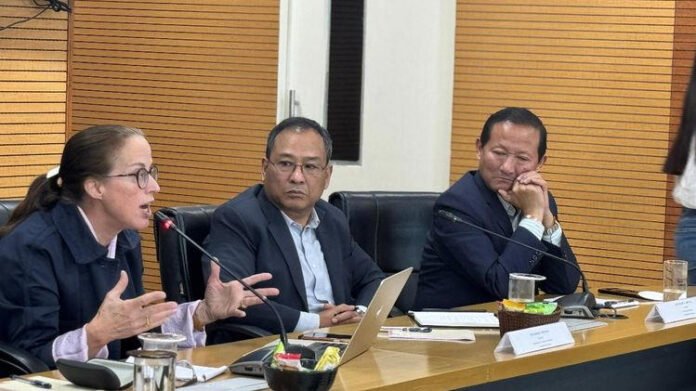The Government of Sikkim recently convened a high-level interdepartmental meeting aimed at fostering integrated development in the fields of science and technology, environmental sustainability, and cultural unity. Held in Gangtok, the strategic dialogue brought together senior policymakers, scientists, environmental experts, and cultural leaders to outline a roadmap that balances innovation with tradition and ecological preservation.
The meeting was chaired by Chief Minister Prem Singh Tamang and included participation from officials of the Department of Science and Technology, Forest and Environment Department, Cultural Affairs and Heritage Department, and representatives from research institutions, universities, and civil society organizations.
At the heart of the discussion was the urgent need to align Sikkim’s developmental goals with sustainable and inclusive frameworks, especially given the region’s ecological fragility, cultural diversity, and technological aspirations.
A key agenda item was the formulation of a comprehensive science and innovation policy tailored for Sikkim’s unique geographical and demographic context. The policy will prioritize eco-sensitive technological interventions in agriculture, waste management, clean energy, and digital governance. Emphasis was placed on creating science-based livelihood opportunities, especially for the youth and rural communities.
Officials presented ongoing projects including solar energy expansion plans, digital skill hubs, and climate-resilient farming techniques developed in partnership with national research bodies. The Department of Science and Technology outlined its vision to make Sikkim a model for green innovation by encouraging local innovations and integrating indigenous knowledge systems into formal scientific research.
On the environmental front, the meeting focused on biodiversity conservation, climate change mitigation strategies, and forest-based sustainable economies. Sikkim, known for its high forest cover and organic farming practices, is seeking to enhance its global standing as a green state. New proposals include strengthening community-based forest management, expanding protected zones, and setting up environmental data centers for real-time ecological monitoring.
Another significant area of discussion was the promotion of cultural harmony and heritage conservation. With over a dozen ethnic groups coexisting in the state, cultural cohesion remains central to Sikkim’s social fabric. The Department of Cultural Affairs presented a framework for organizing intercultural festivals, supporting endangered languages, and digitizing oral traditions and folk art.
The convergence of these three pillars—science, environment, and culture—was viewed not as parallel sectors but as deeply interconnected aspects of sustainable development. The government underscored the importance of adopting a holistic approach that integrates traditional wisdom with scientific advancement while preserving social and cultural harmony.
Participants also reviewed progress on collaborative projects with national and international institutions, including UNESCO, CSIR (Council of Scientific and Industrial Research), and NECTAR (North East Centre for Technology Application and Reach). These partnerships aim to build local capacities, enhance research infrastructure, and promote global best practices.
The meeting concluded with the adoption of a 10-point resolution, committing to:
- Formulate an integrated state policy on science, environment, and culture by the end of 2025.
- Expand renewable energy use across all public institutions.
- Launch a state-wide cultural documentation and digital archiving initiative.
- Develop model eco-villages to demonstrate sustainable living practices.
- Promote STEM education in local schools with a focus on girls and underrepresented communities.
- Encourage public-private partnerships in green innovation.
- Preserve sacred natural sites and indigenous cultural landscapes.
- Enhance environmental education and climate literacy in school curricula.
- Strengthen the role of local communities in environmental governance.
- Foster interfaith and interethnic dialogue through cultural exchange programs.
The high-level meeting marked a milestone in Sikkim’s developmental vision, reflecting the state government’s determination to lead with integrity, inclusiveness, and innovation. As global challenges increasingly demand local solutions, Sikkim’s model of harmonizing science, ecology, and culture offers a blueprint for balanced growth in fragile mountain ecosystems.
With actionable plans and interdepartmental synergy now in motion, the state is poised to further its reputation as a green, culturally rich, and forward-thinking Himalayan region.




